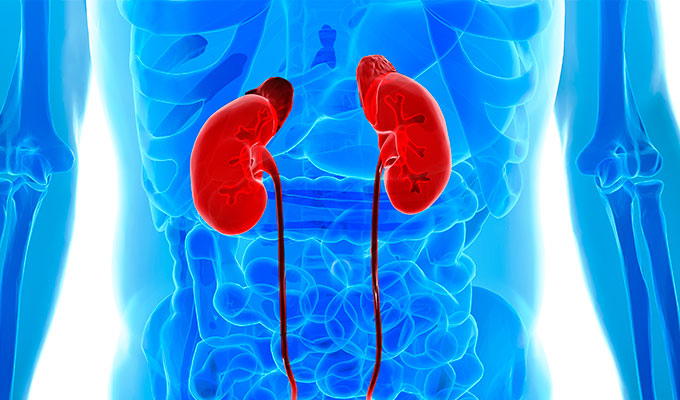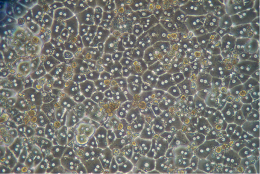Nephropathy is a hot research topic, especially in relation to its link with Diabetes (already 6 500 publications so far referenced in pubmed to date for 2019, a third of them in relation to type I or type II diabetes). As nephropathy can lead to life endangering end-stage renal diseases (ESRDs) with a severe impact on life expectancy, a lot of research is being undertaken to find new drugs to beat this potentially severe condition. Several biomarkers of this pathology have already been identified such as CD27 antigen, kidney injury molecule 1 (KIM-1) and α1-microglobulin in relation to type I diabetes (1), in addition to the well known Clusterin, Cystatin-C, Microalbumin and Beta-2 Microglobulin.
It is believed that long noncoding RNA are involved in the pathogenesis of diabetic kidney disease either directly or via indirect mediators of nephropathic pathways, like TGF-β1, NF-κB, STAT3 and GSK-3β signaling (2). It has also been suggested that a better understanding of the role of the Matrix Metalloproteinases (MMPs) in renal diseases may contribue to improving their prognosis (3). In a recent study by researcher from the Joslin Diabetes Center in Boston, a group of 17 proteins called Kidney Risk Inflammatory Signature (KRIS), have been shown to be linked to ESRDs. This post illustrates a selection of research reagents linked to these biomarkers (ELISA kits, Arrays, Primary cells…) that could be useful for nephropathy related studies.
Biomarker fast quantification with 2 Step ELISAs
If you do not have access to multiplex quantification solutions for a selection of biomarkers that you wish to quantify, a 2 Step ELISA can be a good alternative. It will save you time (1 hour less compared to traditional ELISAs), with easier handling procedure (no dilution process for the biotinylated detection antibody, you add it directly in the wells). All components are stored at 4℃, avoiding validity issues due to improper storage. I have selected below Elabscience newly released 2 step ELISA offer with regards to nephropathy biomarkers. See below a picture of the 6 steps protocole performed in 2.5hrs:

- TwoStep Human TF (Transferrin) ELISA (E-TSEL-H0001 )
- TwoStep Human BMG/ß2-MG (Beta-2-Microglobulin) ELISA (E-TSEL-H0004)
- Human RBP4 (Retinol Binding Protein 4, Plasma) ELISA (E-TSEL-H0006)
- Human Cys-C (Cystatin C) ELISA (E-TSEL-H0008)
- Human NGAL (Neutrophil Gelatinase Associated Lipocalin) ELISA (E-TSEL-H0003)
- Human MAU (Microalbuminuria) ELISA (E-TSEL-H0005)
- Human CLU (Clusterin) ELISA (E-TSEL-H0014 )
Biomarker profiling and multiplex quantification

RayBiotech have developed Quantitative Antibody arrays to simultaneously measure 8 MMPs in any type of sample while using standard laser scanner equipment. You can refer to this previous post about the Quantibody technology if you want to know more about it. tebu-bio laboratories, based in France near Paris, are the official European platform for RayBiotech services in Europe. Your study can be outsourced to them in full confidence.

RayBiotech scientists have also developed C-Series Phosphorylation arrays, compatible with any chemiluminescent detection device, to study pathways such as EGFR, JAK/STAT, and NFkB known to be involved in several kidney diseases.
Kidney primary cell models

Human Renal Glomerular Epithelial Cells (HRGEpC). While the precise role of HRGEpC in disease remains unclear, glomerular problems are a leading cause of kidney disease. When activated, HRGEpC show elevated proliferation, migration and ECM production, activities possibly tied to glomerulonephritis, diabetic nephropathy and other pathologies.

HRPTEpC
Human Renal Proximal Tubular Epithelial Cells (HRPTEpC) provide a useful tool for studying various aspects of pathology and biology of human kidney cells in vitro. HRPTEpC from Cell Applications, Inc. have recently been used in a study of metabolic enzymes responding to energy depletion in renal cells. They play a key role in kidney function including glucotoxicity associated with diabetes.
Both cell types are supplied by Cell Applications, Inc, GMP certified provider of primary cells, dsitributed by tebu-bio in Europe. They come as cryopreserved format, with optimized media, or as full kits (see an example for HRPTEpC cells and kits, basal mediumand growth medium). CellApplications, Inc also provides Epithelial cells Transfection kit and Freezing medium to ensure that you get optimal results with their cells and do not spend time in optimizing handling conditions.
Diabetes tool box
As described in many studies, nephropathy is often linked to diabetes, especially at the later stages of the disease. You may wish to look at a previous post I wrote on diabetes related models, arrays and ELISAif you have an interest for this pathology.
Should you be looking for a specific reagent in relation to this thematic, including other Primary cell models, feel free to contact me. I’ll be happy to help.
- 1)Diabetologia. 2019 Jun 20. doi: 10.1007/s00125-019-4915-0. [Epub ahead of print]. Biomarker panels associated with progression of renal disease in type 1 diabetes.Colombo M1, Valo E2,3,4, McGurnaghan SJ5, Sandholm N2,3,4, Blackbourn LAK5, Dalton RN6, Dunger D7,8, Groop PH2,3,4,9, McKeigue PM1, Forsblom C2,3,4, Colhoun HM10,11; FinnDiane Study Group and the Scottish Diabetes Research Network (SDRN) Type 1 Bioresource Collaboration.
- 2) Clin Sci (Lond). . 2019 Jun 20;133(12):1321-1339. doi: 10.1042/CS20190372. Print 2019 Jun 28. Long noncoding RNA: an emerging player in diabetes and diabetic kidney disease. Guo J1,2,3, Liu Z4, Gong R5,3.
- 3) Kidney Blood Press Res. 2019;44(3):298-330. doi: 10.1159/000499876. Epub 2019 Jun 11. Matrix Metalloproteinases in Renal Diseases: A Critical Appraisal. Zakiyanov O1, Kalousová M2, Zima T2, Tesař V3.



